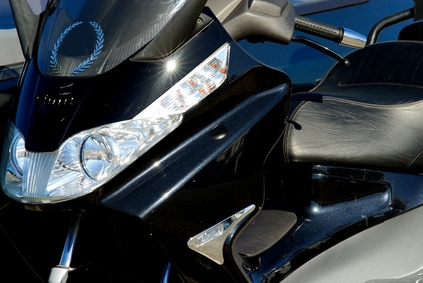
Scooter wiring provides the electrical nervous system for a scooter and is required to make the scooter traffic-safe as prescribed by federal transportation laws. The wiring system is broken into two categories -- the wiring harness itself and the peripheral components that connect to the harness.
Scooter wiring gets its electricity from two sources -- the scooter battery and the scooter engine when it is running and spinning the flywheel magnets. The scooter battery provides continuing power strength that makes lights and signals bright without fading as the engine speeds up or slows down.
The wiring harness will be connected to various components on the scooter including the headlight, taillight and turn signals. Additionally, a blinker fuse and a regulator will also be included. The regulator keeps the 12-volt current smooth so none of the parts burn out by current fluctuations.
When a scooter wiring system fails and stops delivering electricity to the components, the culprit is frequently a short or grounding out of the wiring. This may happen from wear and tear, a wire getting pinched by body parts or malfunction that causes wiring insulation to melt.